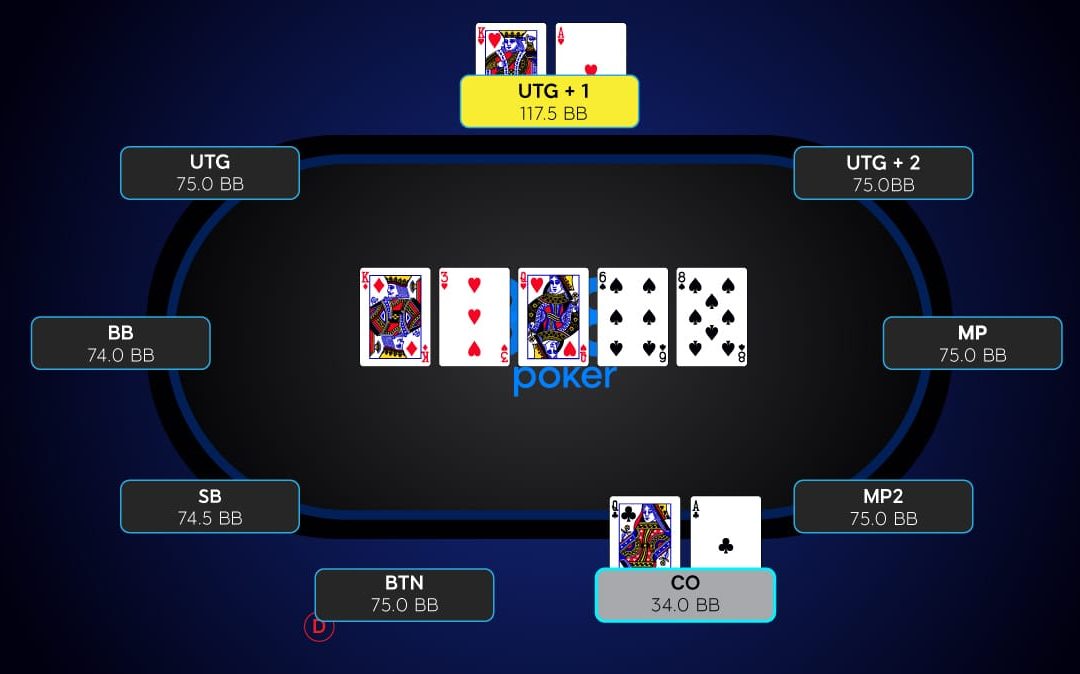You’ve heard a thousand times the value of ranking in poker. The best way to illustrate ways to earn money with the position would be to find an example of how this works in practice.
The sport is Omaha high, where experts say: “Position is everything.” The specified hand is on a $2/$4 pot-limit Omaha table with six players. You are in the large blind, and everyone folds until the cutoff, which raises to $12, and the small blind calls. You look at your hands: 9cJs5sTs. Not a premium hand, however, there are flush and straight possibilities, and the increase of the cutoff does not mean anything. It can quickly happen that he just wished to take the blinds and doesn’t have good hands to play. The tiny blind just made a call and didn’t show any premium hand.
Additionally, it is essential to mention that the stack sizes. The cutoff has $400, the small blind $400, and you $312.30. You make the call, the pot is $36, and the three of you’re going to see the flop. Some information on your competitors’ game design would help, but you’ve just sat down and don’t know any players at the table.
3d7h8s comes on the board and the small blind checks. What an excellent flop for you! You’ve got 13 outs to the nut straight, and there are no flush draws on the board. The tiny blind demonstrated weakness, and you don’t have any information about the cutoff. With a wager, you might choose the flop at this moment, but if you get raised or called, you aren’t going away from your hands. The best is to bet the entire pot, but you opt to make it smaller and lead out with nearly two-thirds of a pot bet, $25. The “cut off” folds but the “remote blind” calls. This is quite an extraordinary situation for you.
The turn card is the 2d and the small blind checks. Ranking in poker has a massive value, as you may recognize. Your opponent assessed again facing you, which essentially means: “I have a fantastic draw, but I missed.” A flush draw has come to the board, too; however, you don’t have diamonds in your hand. The tiny blind’s weakness indicates that using a big bet, you’d take the pot the majority of the time in this circumstance. With the next chance, you also send the following message to your opponent: “I have a strong hand (in this scenario, probably a set), and you need to cover your draw.” You bet $74, almost the full pot, and the small blind calls.
This call tells you he’s on a draw. A diamond on the river would make your situation uncomfortable, but you can take another barrel when a diamond doesn’t come. If a straight comes afterward, you’ll have the nut the majority of the time. The pot is $234.
The river pairs the board with the two hands; He small blind checks that the next time. The tiny blind provides up the hand with this check. This is an exciting situation, you’ve shown strength during the entire hand, and you must take the third barrel because, if you check 99 percent of the time, you will lose the hand. So the question is: how much should you bet to make your opponent fold? I advise you not to bet the whole pot if you make a bluff. The full-size pot bet smells like a bluff; therefore, try to create a half-or two-thirds of a pot-sized chance, which appears like you just turned a complete house, and you make a value bet.
In many poker games such as Hold’em, your position at the table may be a huge issue. Your”position” only refers to the location where you sit regarding the dealer’s button. As gambling goes in a clockwise fashion, so your position at a can ascertain many things. You can see how other players react to their hands in a fantastic job and if they fold, bet, or call before you or not. Thus the poker phrase, “Position is power,” is very much real and justified.
These places have different names to identify where players are sitting regarding the dealer’s button. Every poker place has its abilities or defects.
The button is the best place in the course of any gambling round.
The player under the gun gets the most dreadful position.
The large blind has a wrong position too.
The small blind has the worst place.
The significance of a poker position is dependent upon many issues. Like, in no-limit Hold’em, the work is a lot more significant than a limitation Hold’em poker. As a player, you will need to know what hands are usually playable in almost any position.
Just imagine you’re under the gun and have Queen-Ten, unsuited and choose to shuffle to the pot. The player to bet after you raise and everybody folds beside you. Now you are in a tight position. There are chances that this player obtains better cards than you. An ace, king, or pocket set makes a hand better than your cards. You can guess that somebody who rose has at least a hand like that. Now you’ve got two choices; call again and enter the flop for a fold or loser and give up a wager.
The awful matter is that if you call, you’ll need to act before this participant for the remainder of the hand. Then again, think that you’re on the button. You’ve got Queen-Ten, improper, and all of the other players fold to you. You have two choices where to fold, allow the blinds to fight it out, or call and notice what happens on the flop. Here the majority of the players would lift as you can pinch the blinds, and even if you did not, you would behave after them for the rest of the hand. Raising is only a reasonable option because of your advantageous position. Another notable element in the significance of poker position goes favorably by understanding the players around you at once.
Being in early with a fantastic hand is worse than being in a late position with a lavish hand. Usually, early position raisers are taken for granted to have a great hand. It has a propensity to generate the players panic. Early pre-flop increases can induce the other players to call two bets at once if there’s almost nothing in the pot worth fighting for. In the event of a late position, you can find opportunities to have players that have already called one bet. With a tiny bit of something in the pot, those players can call one chance.

